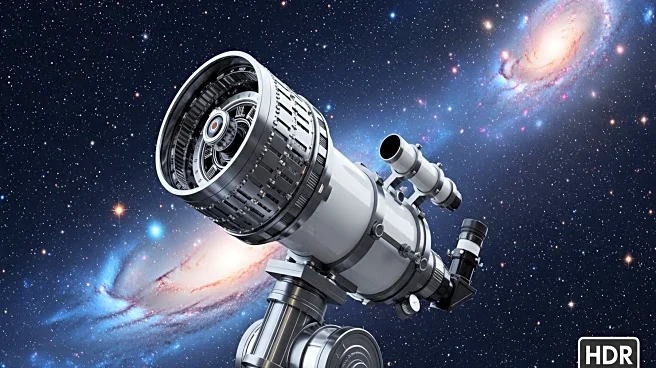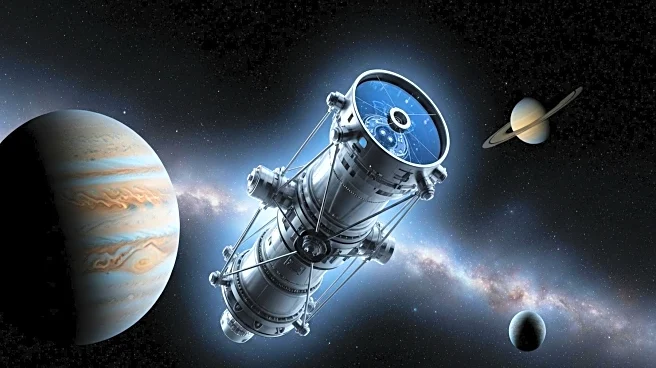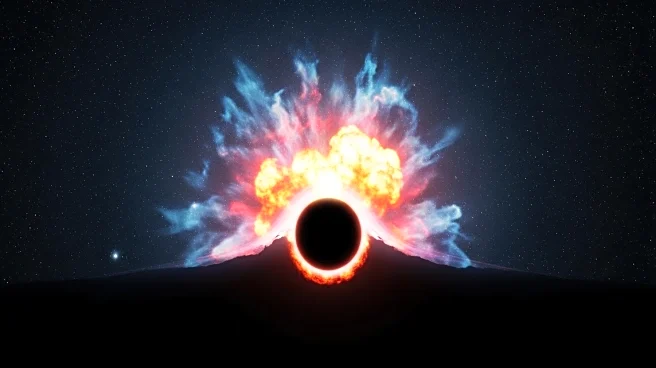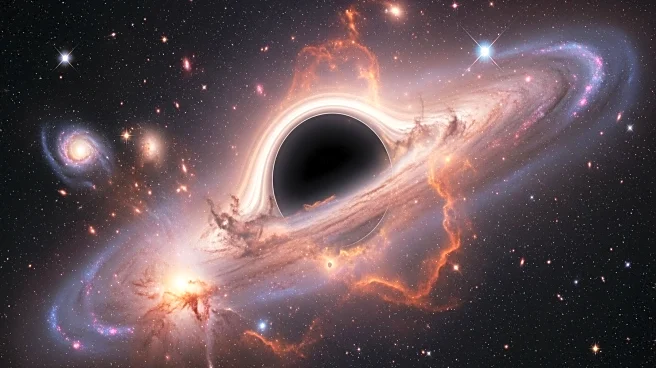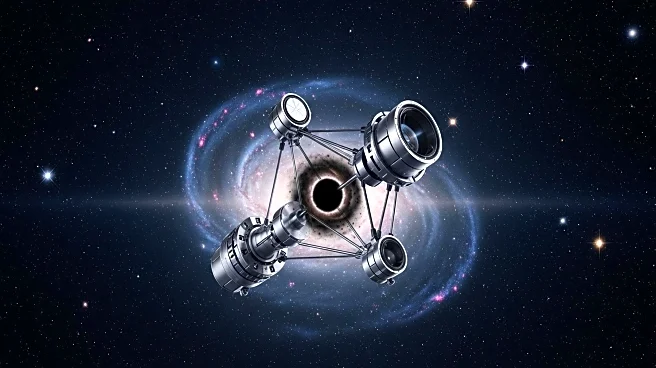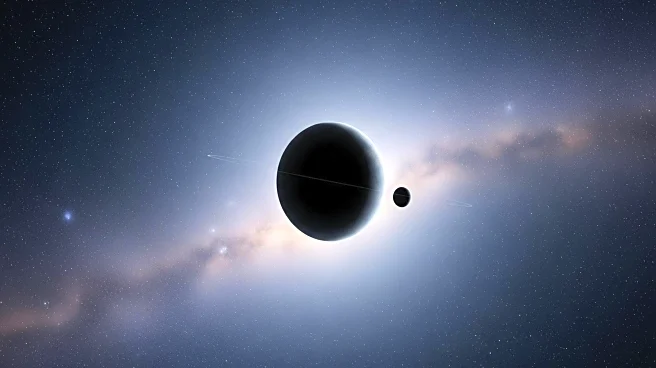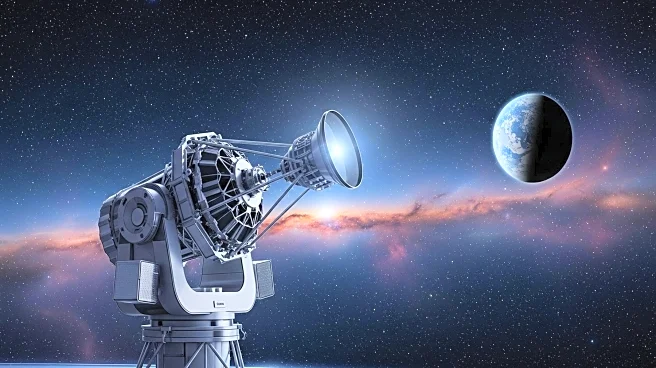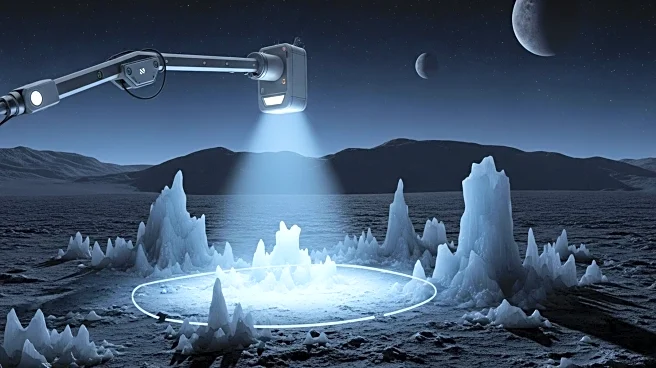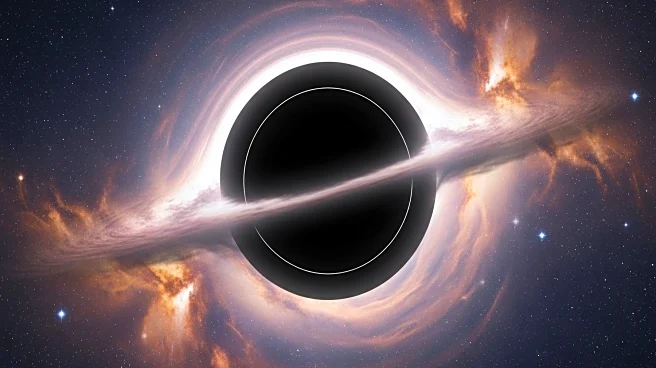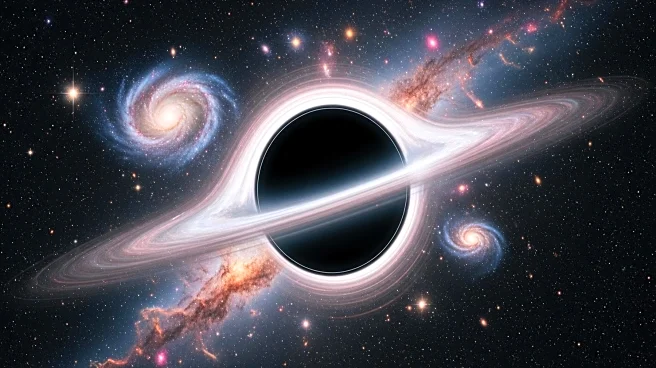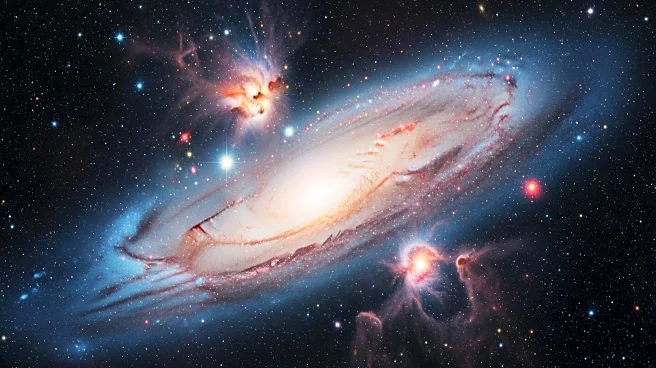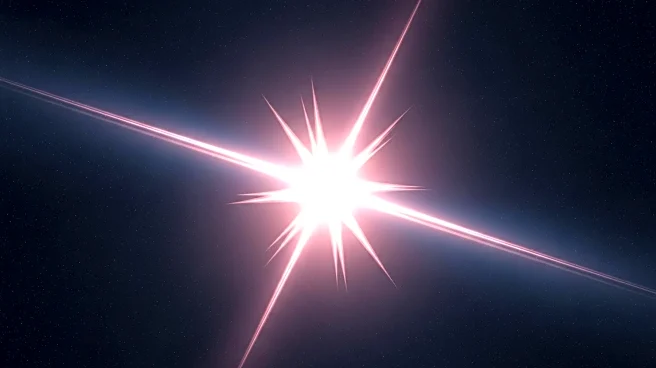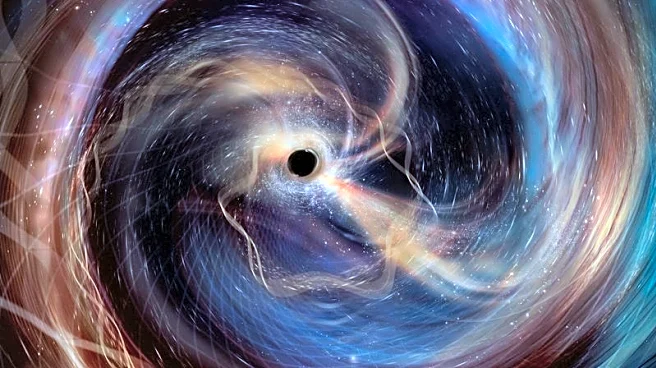What is the story about?
What's Happening?
Researchers utilizing the James Webb Space Telescope have discovered a significant pattern in the rotational direction of ancient galaxies. Approximately 60% of the 263 galaxies studied rotate clockwise, contradicting previous assumptions about the randomness of galactic rotations. This finding has sparked interest in the scientific community, prompting discussions about the potential underlying cosmic order. Some scientists propose the hypothesis that the universe might be encapsulated within a massive black hole, which could reshape our understanding of cosmic dynamics.
Why It's Important?
The discovery of a consistent rotational pattern among ancient galaxies could have profound implications for cosmology. If validated, it suggests a previously undetected structure or influence affecting cosmic formations, potentially leading to new theories about the universe's formation and evolution. The hypothesis that the universe might be within a black hole challenges conventional cosmological models, necessitating a reevaluation of fundamental cosmic principles. This could alter our perception of the universe's boundaries and the nature of space-time, driving further exploration and technological advancements in astronomical studies.
What's Next?
Researchers are considering alternative explanations for the observed galactic rotations, such as observational bias influenced by the Doppler effect. Addressing these biases is crucial for ensuring the accuracy of future studies. The findings emphasize the importance of continued exploration and observation of the cosmos, as technological advancements enhance the capabilities of instruments like the James Webb Space Telescope. The scientific community is poised to push the boundaries of knowledge, potentially uncovering revolutionary insights into the universe's mysteries.
Beyond the Headlines
The possibility that the universe might be trapped within a black hole carries significant implications for cosmology, challenging existing theories about the universe's origins, structure, and ultimate fate. If validated, it would require the development of new models to describe the universe's behavior within this unique context. This discovery highlights the complexities involved in conducting precise astronomical observations and the need for recalibrating instruments to account for biases, ensuring the accuracy of future studies.
AI Generated Content
Do you find this article useful?
